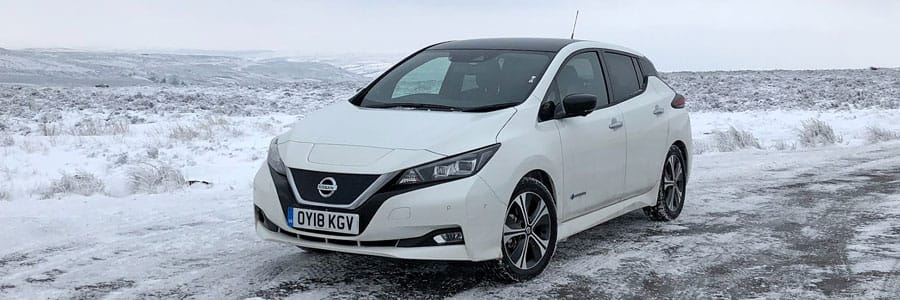EV driving - what to expect when planning a trip in winter

Electric vehicles are increasingly commonplace, particularly in the fleet market and with business drivers. The combination of accessible leasing prices and low running costs in terms of fuel, tax, and company car tax have seen the numbers of electric cars on the road soar in recent months.
Because of this, many drivers will not have driven one through a typical British winter. As with petrol or diesel models, there are certain aspects of driving an EV to keep in mind when the elements take a turn for the worse. We highlight what to look out for when driving an EV in winter.
Reduced range
As temperatures drop, so does an EV’s driving range. Batteries of any size dislike the cold, and as such the vehicle’s range will drop simply because of a reduction in outside temperature.
In summer, a driver may be achieving around 250 miles on a single charge, but frequently the same car will only achieve 200 miles or less in mid-winter - over the same roads, with the same driver, and in similar traffic conditions.
Recharging (may be) required
A drop in range is often something that doesn’t really impact day-to-day driving, with most EV drivers’ average daily mileage well within a single charge of an electric car. Longer trips may need an extra stop on a public point though, with the required time added to the trip plan.
Drivers can reduce their cruising speed to off-set this a little, but too much and it’s not worth the effort. EVs can often rapid or ultra-rapid charge, meaning a 510 minute stop will usually take the edge off range anxiety for no significantly noticeable extra journey time.
Efficiency’s important
To counter the weather’s impact on an EV’s driving range, it’s important to drive as efficiently as possible. The key element here is to make the most of an electric vehicle’s brake energy recuperation (regen) settings, which vary from model to model, but all can make a big impact in overall range available.
Whether an EV has paddles to manually change regen strength, an automatic-mode, or 'one-pedal’ driving operation, any switching systems or making the most of them could easily make the difference in the car’s range covering a single trip or coming up short.
Coasting on faster roads can be better than gaining a tiny bit of recuperated energy, and lifting off before a junction 50 metres earlier than usual may allow the EV to come to a stop itself rather than requiring the use of the brake pedal. By planning ahead, and employing general efficient driving techniques, an EV’s range can be boosted.
Other systems such as pre-conditioning can see large savings in range. By getting the EV’s cabin to temperature while plugged in to a charger, you are saving the car’s battery from working to heat the interior of a large metal box in sub-zero temperatures. Let the mains take the strain.
Business bookings
Where possible, an EV driver should check on the availability or otherwise of charging facilities where they are heading. When running along regular routes and comfortably within range, it’s often not necessary to charge the car all the time. When on a longer run however, if there’s charging available, plug the car in every time.
When stopped, the car can gain even a tiny amount of charge, and it takes just a few moments to plug in each time. By topping up little and often, the EV will likely not need a stop specifically to recharge, or at least see dwell time reduced should it still be required.
Don’t push it
General driving tips in poor weather are as applicable to electric vehicles as any other. Make sure you have some water and food to hand in case you get stuck somewhere, a torch, first aid kit and so on. But, in particular, don’t push your luck with the battery.
Like a petrol or diesel car, if you’re stuck in a traffic jam and need the heating on, the car’s fuel - or in this case battery charge - is used to keep things warm. Whereas in summer it won’t be much of an issue to be stuck in traffic for hours on end with the car completely switched off, that’s not the case in mid-winter.
It’s simpler and safer to keep on top of that battery percentage rather than risk getting stuck in the cold.
View our latest blog posts

Categories
Pages
We are a family run business based in rural Worcestershire. Our team of 38 staff are on hand to provide an exceptional service to personal and business customers.
Read More
